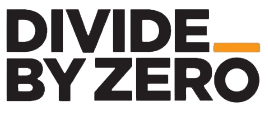In the fast-paced world of automotive manufacturing, optimizing the supply chain is critical to maintaining competitive advantage. 3D printing, or additive manufacturing, has emerged as a transformative technology that enables automotive manufacturers to produce parts on-demand, reducing inventory costs, and eliminating the need for traditional tooling and molds. Divide By Zero Technologies, a leader in 3D printing solutions, is at the forefront of this revolution, offering innovative ways to streamline supply chains and boost efficiency.
1. Benefits of On-Demand Production
Reduced Inventory Costs
Traditional manufacturing methods often require producing parts in large quantities to achieve economies of scale. This results in high inventory costs as manufacturers must store excess parts. 3D printing allows for the production of parts on-demand, meaning manufacturers only produce what they need when they need it. This significantly reduces the costs associated with warehousing and inventory management.
Elimination of Tooling and Molds
Conventional manufacturing processes require expensive and time-consuming tooling and molds for part production. 3D printing eliminates the need for these tools, enabling manufacturers to produce parts directly from digital designs. This not only reduces production costs but also accelerates the time-to-market for new parts.
2. Enhancing Flexibility and Responsiveness
Rapid Prototyping and Iteration
3D printing enables rapid prototyping, allowing manufacturers to quickly produce and test new designs. This iterative process helps identify and resolve design issues early, reducing the risk of costly mistakes in mass production. The ability to rapidly prototype and iterate designs enhances the overall flexibility and responsiveness of the supply chain.
Customization and Personalization
With 3D printing, manufacturers can easily customize parts to meet specific customer requirements or adapt to changing market demands. This level of customization is difficult to achieve with traditional manufacturing methods. By leveraging 3D printing, automotive manufacturers can offer personalized products without the need for extensive retooling or production delays.
3. Real-World Applications in the Automotive Industry
Spare Parts Production
One of the most significant advantages of 3D printing is its ability to produce spare parts on-demand. This is particularly beneficial for older vehicles where spare parts may no longer be available. By digitally storing part designs and producing them as needed, manufacturers can reduce the need for large inventories of spare parts, minimizing storage costs and ensuring parts availability.
Tooling and Fixtures
3D printing is also used to produce tooling and fixtures required for assembly lines. These tools are often customized to specific production needs and traditionally require long lead times to manufacture. 3D printing shortens this lead time, allowing for rapid production of custom tools and fixtures, enhancing the efficiency of assembly processes .
Case Study: General Motors
General Motors has successfully implemented 3D printing to optimize their supply chain. By producing tools, fixtures, and prototype parts using additive manufacturing, GM has reduced production times and costs. For example, the company has used 3D printing to create a prototype for an engine part, reducing the production time from weeks to days and saving thousands of dollars in the process.
4. The Future of Supply Chain Optimization with 3D Printing
Digital Inventory and Distributed Manufacturing
The concept of a digital inventory, where part designs are stored digitally and produced on-demand, is set to revolutionize supply chains. Distributed manufacturing, enabled by 3D printing, allows parts to be produced closer to the point of use, reducing transportation costs and lead times. This shift towards a more agile and responsive supply chain will be a key driver of competitive advantage in the automotive industry.
Sustainability and Waste Reduction
3D printing contributes to more sustainable manufacturing practices by reducing material waste and energy consumption. Traditional subtractive manufacturing methods often result in significant material wastage, whereas additive manufacturing uses only the material necessary to create the part. This not only reduces costs but also minimizes the environmental impact of manufacturing activities .
Conclusion
Divide By Zero Technologies is leading the way in supply chain optimization through innovative 3D printing solutions. By enabling on-demand production, reducing inventory costs, and eliminating the need for tooling and molds, 3D printing is transforming the automotive supply chain. As the technology continues to evolve, its impact on supply chain efficiency and sustainability will only grow, shaping the future of automotive manufacturing.

